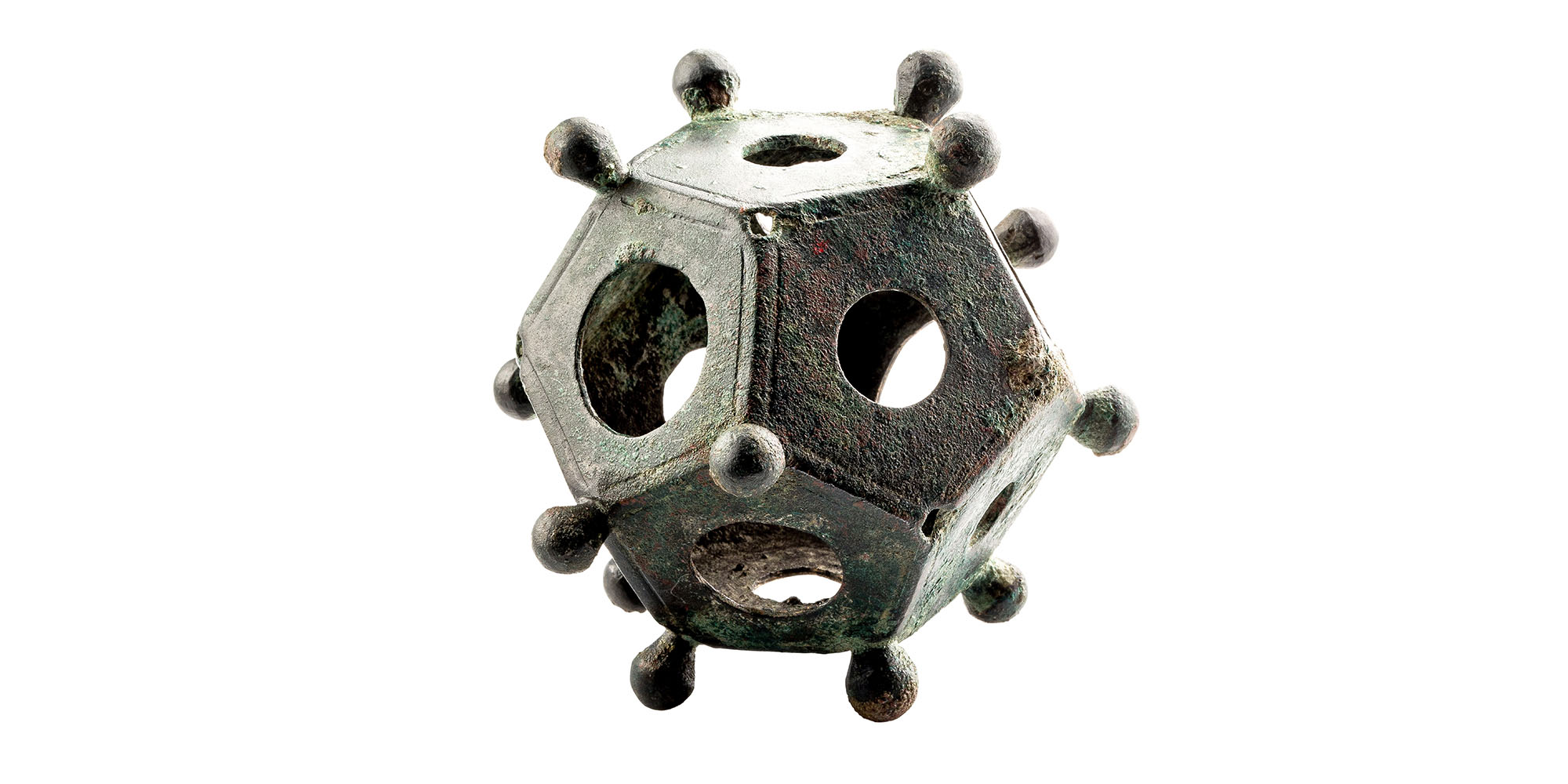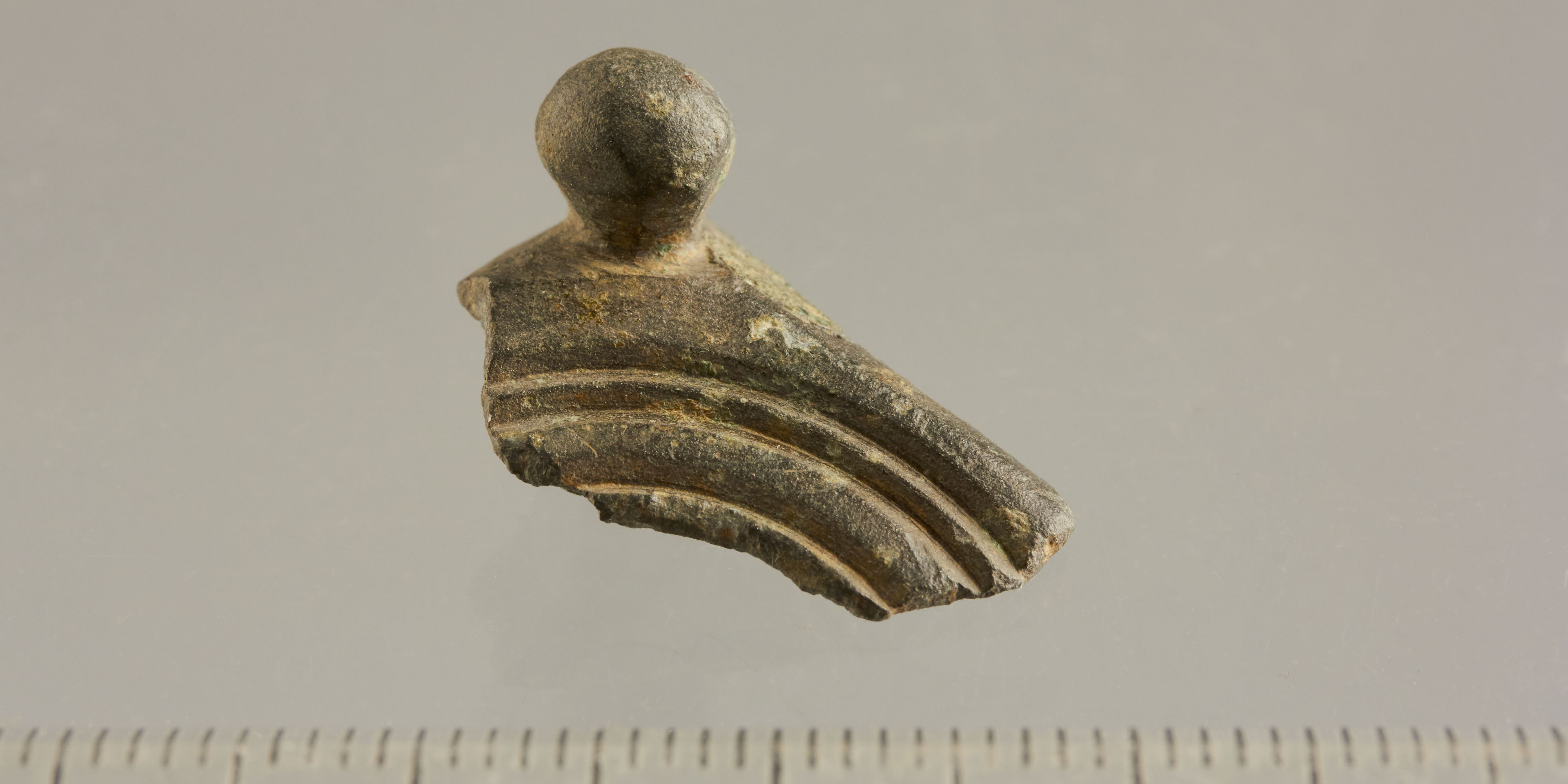Patrick Schuermans discovered a fragment of a 1,600-year-old dodecahedron in Belgium
Sarah Kuta
Daily Correspondent
February 6, 2023

An intact Roman dodecahedron at the Gallo-Roman Museum Flanders Heritage Agency
Amateur archaeologist Patrick Schuermans was wandering around a field in northern Belgium when his metal detector alerted him to the presence of something underfoot. When he located the item in question, he realized it might be something special.
He had stumbled upon a fragment of a 12-sided Roman object called a dodecahedron. It’s likely more than 1,600 years old, according to the experts at the Gallo-Roman Museum in Tongeren, Belgium, where Schuermans took the fragment in December. His find will now go on display at the museum alongside an intact bronze dodecahedron found nearby in 1939.
Schuermans, who has been hunting with his metal detector for years, found the fragment near the town of Kortessem in Flanders. His discovery is only the second known dodecahedron found in the area, per a statement from the government-run Flanders Heritage Agency. Experts believe the piece belonged to a dodecahedron that measured roughly two inches across.

The fragment discovered in northern Belgium Flanders Heritage Agency
Dodecahedrons have long perplexed archaeologists and historians. They are typically 12-sided geometric objects made of metal with hollow centers. They’re about the size of a baseball and are dotted with large holes; studs protrude from each corner.
More:
https://www.smithsonianmag.com/smart-news/amateur-archaeologist-discovers-mysterious-roman-object-possibly-used-for-magic-180981582/
 = new reply since forum marked as read
= new reply since forum marked as read

